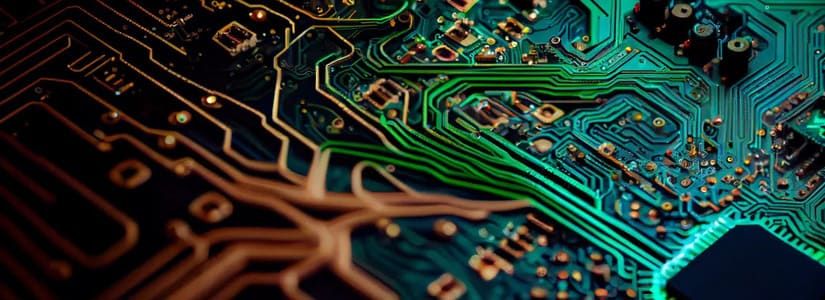TL;DR
- Quantum computing poses serious risks to the security of blockchains, but it also offers opportunities for innovation.
- Shor’s and Grover’s algorithms could break the current security of blockchains, affecting private keys, digital signatures, and hash functions.
- Despite the risks, quantum computing could also optimize processes within blockchains and encourage the creation of new, more secure consensus models.
Quantum computing, with its ability to solve complex problems exponentially faster than traditional computers, has ceased to be a futuristic theory and become an objective reality. This technological advancement presents a critical challenge to blockchain security while also opening the door to innovations in cryptography and distributed systems. Is quantum computing a threat to cryptocurrencies and blockchains, or a catalyst for their evolution?
What is quantum computing and how does it affect blockchain?
Quantum computing leverages quantum phenomena such as superposition and entanglement to process information in a radically different way than classical computers. While current systems work with bits (0 or 1), qubits can exist in multiple states simultaneously, exponentially increasing their computational capacity.
The cryptographic security of blockchains relies on public key algorithms and hash functions that are extremely difficult to solve with classical computers. These systems depend on problems such as integer factorization (RSA) or discrete logarithms in elliptic curves (ECC), whose resolution requires prohibitively long computational time. However, advances in quantum computing are drastically changing this landscape.
- Shor’s algorithm and the threat to RSA and ECC:
Proposed by Peter Shor in 1994, this algorithm allows for exponentially faster resolution of factorization and discrete logarithm problems than classical methods. For example, while decrypting a 2048-bit RSA key would take thousands of years with current computers, a sufficiently advanced quantum computer could do it in hours or even minutes. This means that private keys, essential for ensuring authenticity and confidentiality in blockchain, would be vulnerable. - Grover’s algorithm and hash functions:
Lov Grover developed a quantum algorithm that enables more efficient searching in unstructured databases, reducing the time required to find a collision in a hash function. In the case of blockchain, hash functions such as SHA-256, used in mining and address generation, are considered secure because finding two inputs that produce the same result is extremely unlikely. However, with the power of Grover’s algorithm, this security is drastically reduced, compromising the integrity of transactions and blocks. - Practical implications:
The ability to break private keys would allow an attacker to take control of wallets, sign fraudulent transactions, or manipulate smart contracts. In parallel, finding collisions in hash functions could allow the creation of fake blocks, destabilizing the entire blockchain network. These vulnerabilities demand an urgent response from the community to update cryptographic algorithms to post-quantum standards.
Immutability: A Fundamental Principle Under Threat
Immutability is one of the most valuable features of blockchain technology, as it ensures that recorded data cannot be altered once confirmed. This is achieved through hash cryptography and the linked block structure. However, quantum computers challenge this fundamental principle.
- Hash collisions and block manipulation:
The ability of a quantum computer to find collisions means it could generate two different inputs with the same hash. This would not only allow altering data in existing blocks but could also be used to generate alternative blocks and create forks in the chain without the nodes detecting the fraud. - Implications for integrity proofs:
Many blockchain systems, including those used in public records, product traceability, and smart contracts, rely on immutability to ensure the authenticity and validity of data. If attackers succeed in altering these records, the consequences could include mass fraud, loss of public trust, and irreversible damage in critical sectors such as finance and logistics.

Consensus Mechanisms: An Open Door to Manipulation
Consensus mechanisms, such as Proof of Work (PoW) and Proof of Stake (PoS), ensure that all nodes in the network agree on the current state of the blockchain. These systems are crucial for preventing attacks such as double spending and ensuring decentralization. However, quantum computing could put these mechanisms at risk.
- Proof of Work (PoW):
In PoW-based networks, like Bitcoin, miners compete to solve complex mathematical problems using computational power. Quantum computers could solve these problems with an efficiency unattainable by classical devices, giving a disproportionate advantage to those who possess this technology. This would not only centralize mining but also open the possibility of a 51% attack. - Proof of Stake (PoS):
Although PoS relies more on the number of tokens a validator holds than on their computational power, quantum attacks could affect the generation of private keys used for block validation. This would allow an attacker to compromise validation nodes or steal funds directly. - Other consensus models:
Emerging mechanisms, such as Proof of Authority (PoA) or those based on DAG (Directed Acyclic Graph), could also be vulnerable, as they depend on current cryptography to ensure the security and authenticity of transactions.
Advantages and opportunities
While the risks are high and diverse, quantum computing also offers unique opportunities:
- Post-quantum cryptography:
The tech community is developing algorithms designed to withstand quantum attacks. These standards, promoted by organizations such as NIST, will pave the way for more secure blockchains. - Process optimization:
Quantum computers could accelerate processes within blockchain, such as transaction validation and block creation, improving the overall efficiency of networks. - New security models:
Innovation could lead to the design of more robust and resilient consensus mechanisms, strengthening blockchains against external attacks.

Disadvantages and risks
The existing challenges should not be underestimated and must be addressed immediately, as technology is advancing rapidly and often goes almost unnoticed or ignored:
- Current vulnerability:
Existing blockchains are not prepared to face these attacks, leaving them exposed until they adopt post-quantum cryptography. - Costly adaptation:
Migrating to post-quantum systems will require hard forks, protocol updates, and a monumental effort of global collaboration. This will involve time, resources, and storage costs. - Technological gaps:
Applications with limited resources, such as IoT, could have greater difficulty adapting to the new quantum infrastructure.
Is it a threat or a benefit?
Quantum computing is both a threat and an opportunity. While it may compromise the foundations of current security, it could also be a powerful tool to reinvent blockchain and make it more secure and efficient. This double-edged sword depends on who masters this technology first: attackers or the blockchain community.
Blockchain projects exploring quantum computing
Although most blockchains are not yet designed to face this challenge, some projects are already exploring solutions:
- Quantum Resistant Ledger (QRL):
A blockchain designed from the ground up with algorithms resistant to quantum attacks. QRL uses XMSS (eXtended Merkle Signature Scheme), a hash-based signature scheme approved as a post-quantum standard. - IOTA:
Although not fully resistant to these hypothetical attacks, it has already begun integrating security elements into its Tangle protocol, a structure different from traditional chains.

Conclusion
Quantum computing is an inevitable challenge for blockchains in the coming years. However, with innovation, collaboration, and preparation, the blockchain community can turn this threat into an opportunity to move toward a more secure and resilient ecosystem.
The future of blockchain in the quantum era will depend on its ability to adapt, embrace new technologies, and stay true to its fundamental principles: decentralization, transparency, and security. Only those who can anticipate the changes will be prepared to ensure the continuity of these networks. And perhaps, moving in the right direction will open the door to a new blockchain that today is unthinkable











